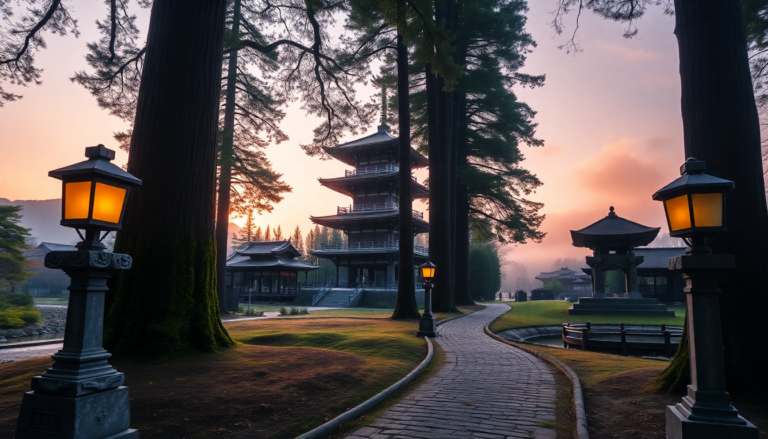Argomenti trattati
As dawn breaks over the tranquil landscapes of Japan, the allure of Koyasan, or Mount Koya, beckons with a promise of spiritual renewal and natural beauty. This UNESCO World Heritage site, nestled amid towering cedar trees, boasts over 100 Buddhist temples, each whispering tales of centuries past. A journey to Koyasan is not merely a trip; it’s a sensory immersion into the heart of Japanese spirituality and tradition.
Discovering the Enchantment of Koyasan
With its serene atmosphere and rich cultural heritage, Koyasan holds a special place in the hearts of many who seek solace and inspiration. Renowned as the world headquarters of the Koyasan Shingon sect of Japanese Buddhism, its tranquility invites both pilgrims and curious travelers to explore its sacred grounds. Wondering how accessible it is? This mountain sanctuary is less than two hours from Osaka or Wakayama, making a day trip an ideal way to soak in its spiritual essence without needing to stay overnight.
On my recent visit, I set out early from Osaka, eager to maximize my time amidst the temples. The train ride along the Nankai-Koya Line is a journey in itself, offering scenic views of the Japanese countryside that unfold like a beautiful story through the window. The anticipation builds as you switch at Gokurakubashi station and catch your first glimpse of the sacred mountain.
A Pilgrimage for the Senses
Upon arrival, the air is crisp with the invigorating scent of pine and earth, awakening my spirit. I chose to hike the Fudouzaka route, a path that bears the footsteps of countless pilgrims before me. This 2.5 km ascent, though challenging, is incredibly rewarding. Each step along the narrow trail reveals hidden gems—a small temple, Kiyome no Fudo do Hall, and weathered statues, each telling a story of devotion and faith. This connection to the land resonates deeply, much like the essence of umami, the rich flavor that springs from the very soul of nature.
Reaching Nyonin-do Hall, the only temple dedicated to female pilgrims, I paused to reflect on its significance. For centuries, women were barred from entering Koyasan, and this hall stands as a powerful symbol of their resilience and unwavering faith. As I continued my pilgrimage toward Daimon, the grand entrance to Koyasan, I felt that this journey was not just a physical endeavor but a spiritual awakening, deepening my appreciation for the traditions that enrich this sacred space.
Embracing the Spiritual Experience
Upon arriving at Daimon, I was greeted by the unexpected joy of a traditional Buddhist ceremony—a vibrant celebration held just once a year. The atmosphere was electric, filled with laughter and community as locals threw mochi into the air, each piece carrying a wish for good fortune. Engaging with the friendly locals added warmth to my experience, showcasing the renowned hospitality that Japan is celebrated for. It’s a beautiful reminder that behind every dish and every tradition, there lies a story waiting to be told.
As I explored Koyasan’s central area, I wandered through the breathtaking Danjo Garan and visited the Koyasan Reihokan Museum. Here, the rich tapestry of Buddhist relics deepened my understanding of this ancient faith. Strolling through the Okuno-in cemetery, I was enveloped in serene silence, broken only by the rustle of leaves and the distant calls of nature. This sacred ground, the largest cemetery in Japan, is a mesmerizing blend of history and spirituality, with over 200,000 tombstones standing as testaments to lives lived in devotion.
My journey culminated with a late lunch at a quaint café, where I savored the flavors of traditional Japanese cuisine while reflecting on the day’s experiences. As the sun dipped behind the mountains, I felt a profound sense of gratitude for the chance to connect with such a vibrant culture and landscape.
Whether you choose to visit Koyasan for a day or opt for an overnight experience in temple lodgings, a spiritual and culinary journey awaits you. Engaging in meditation, savoring vegetarian meals, and witnessing rituals firsthand offers a glimpse into the serene Buddhist lifestyle.
Koyasan, with its breathtaking vistas and deep-rooted traditions, is not just a destination but an invitation to embark on a journey of the senses. Will you answer the call?

